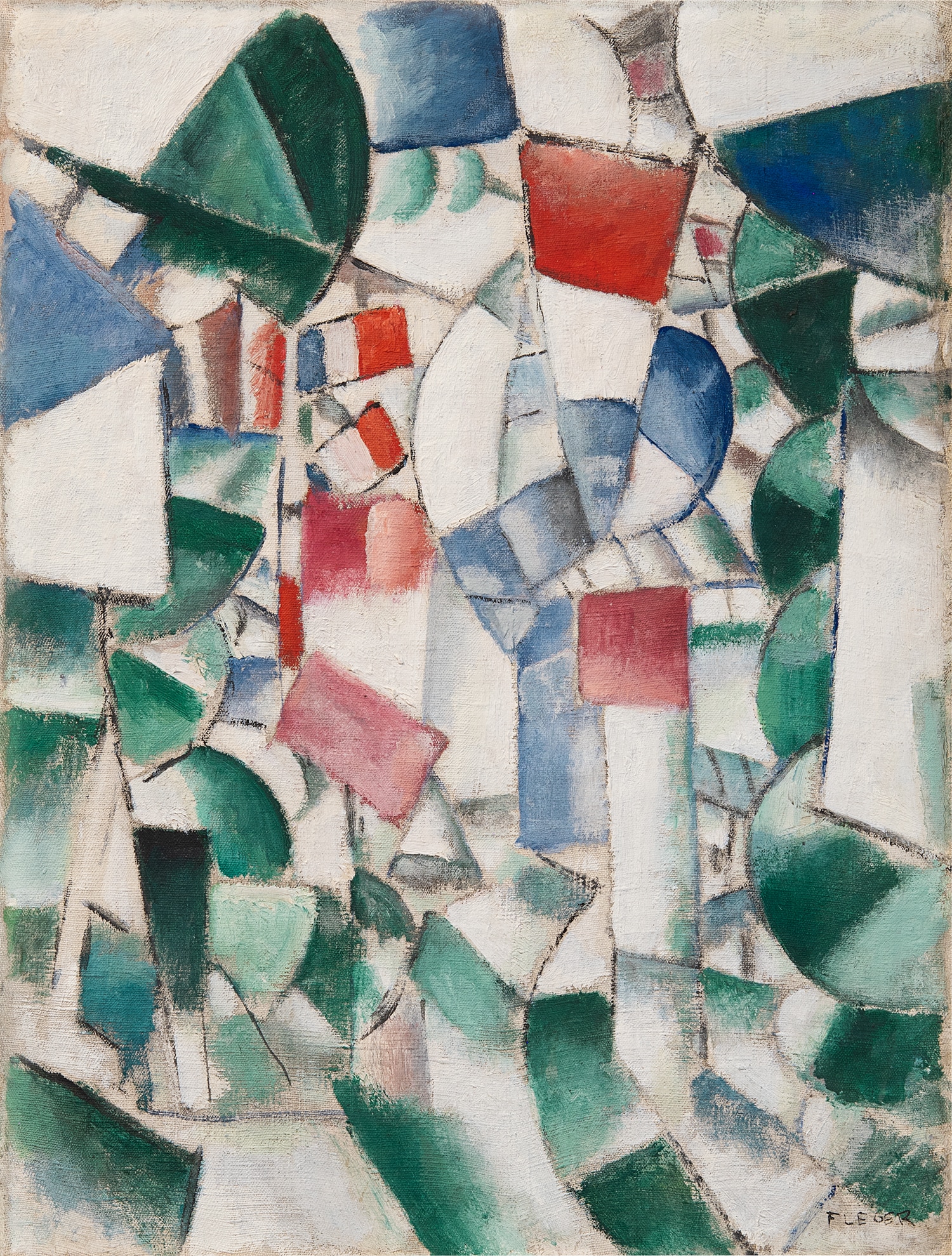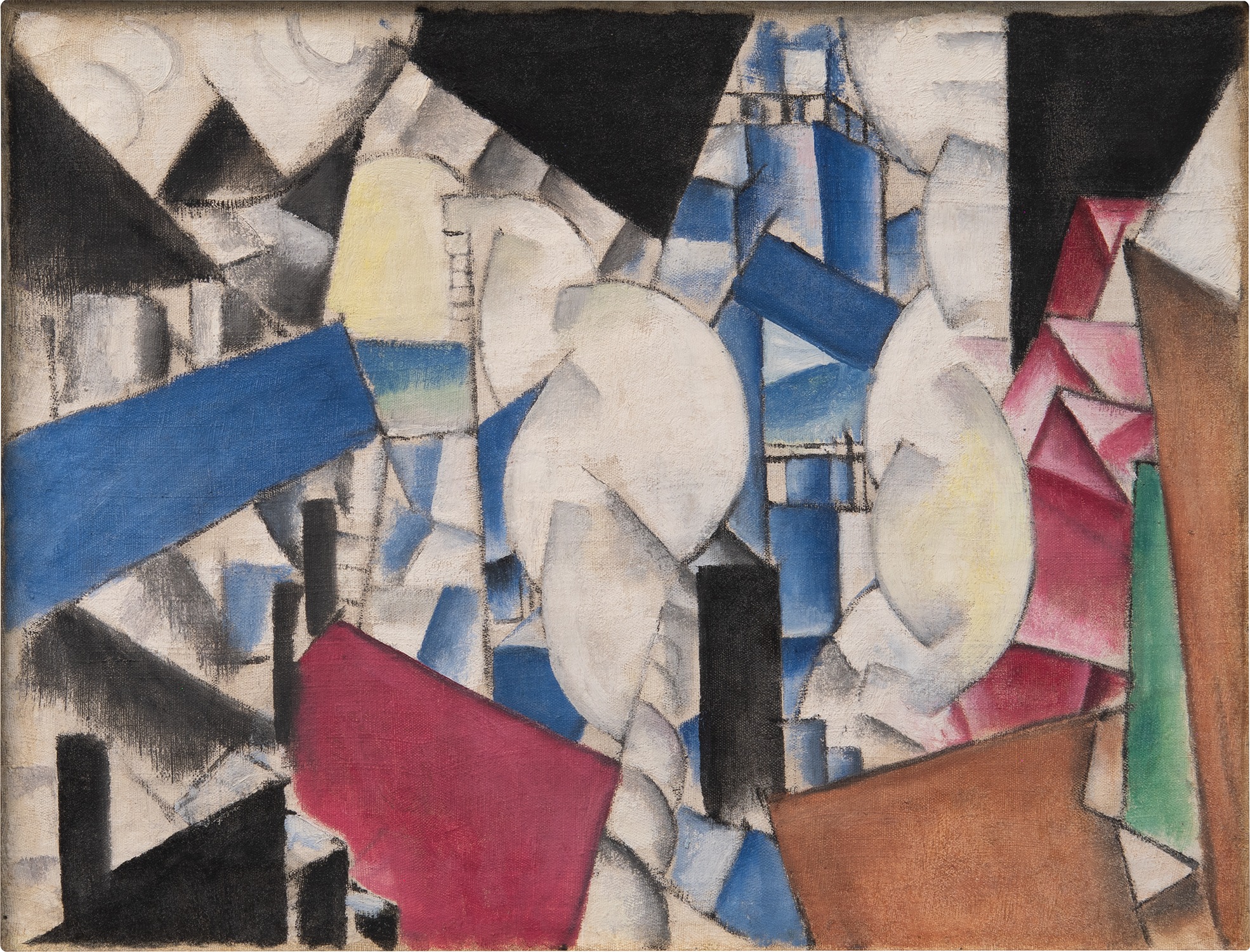



LIVING THE AVANT-GARDE: THE TRITON COLLECTION FOUNDATION
10
Fernand Léger
Le 14 juillet
signed "F LEGER" lower right
oil on canvas, double-sided
23 5/8 x 17 7/8 in. (60 x 45.7 cm)
Painted circa 1912-1913, this work is accompanied by a certificate of authenticity issued by the Comité Léger.
This work features a recently-discovered artwork on the verso, from the series Fumées sur les toits, painted circa 1911-1912.
This work features a recently-discovered artwork on the verso, from the series Fumées sur les toits, painted circa 1911-1912.